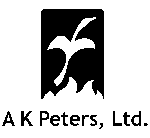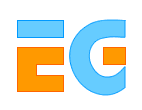Invited Speakers
These are the invited speakers for Eurographics 2006.
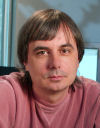 Herbert Edelsbrunner, Arts and
Sciences Professor of Computer Science and Mathematics, Duke
University
Herbert Edelsbrunner, Arts and
Sciences Professor of Computer Science and Mathematics, Duke
University
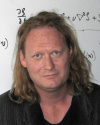 Jos Stam
Jos Stam
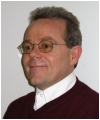 Reinhard Klein
Reinhard Klein
Invited Talk 1
| Date: | Wednesday, 6th September |
| Time: | 9:45-10:45 |
| Location: | Hall 3 (Alte Aula 2nd floor) |
| Session Chair: | Eduard Gröller |
 Herbert Edelsbrunner, Arts and
Sciences Professor of Computer Science and Mathematics, Duke
University
Herbert Edelsbrunner, Arts and
Sciences Professor of Computer Science and Mathematics, Duke
University
- Title
- A primer on topological persistence
- Abstract
- The idea of topological persistence is to look at homological
features that persist along a nested sequence of topological spaces.
As a typical example, we may take the sequence of sublevel sets of a
function. The combinatorial characterization of persistence in terms
of pairs of critical values and fast algorithms computing these pairs
make this idea practical and useful in dealing with the pervasive
phenomenon of noise in geometric and visual data. This talk will
- recall the relatively short history of persistence and some of its older roots;
- introduce the concept intuitively while pointing out where algebra is needed to solidify the more difficult steps;
- discuss a few applications to give a feeling of the potential of the method in dealing with noise and scale.
- Short Biography
- Herbert Edelsbrunner is Professor at Duke University and on the Board
of Directors at Raindrop Geomagic. He graduated from the Graz
University of Technology, Austria, in 1982 and was with the
Department of Computer Science at Urbana-Champaign from 1985 through
1999. His research areas are algorithms, computational geometry and
topology, and structural moleculear biology. He has published two
textbooks in the general area of computational geometry and topolgy.
In 1991, he received the Alan T. Waterman Award from the National
Science Foundation. In 1996 he co-founded Raindrop Geomagic, a
company focusing on sophisticated 3D geometric modeling software. In
2005, he was elected member of the American Academy or Arts and
Sciences.
Herbert Edelsbrunner specializes in the combination of computing and advanced mathematics to solve problems in applications. His methodology is to search out the mathematical roots of application problems and to combine mathematical with computational structure to get working solutions.
Invited Talk 2
| Date: | Thursday, 7th September |
| Time: | 14:00-15:00 |
| Location: | Hall 3 (Alte Aula 2nd floor) |
| Session Chair: | László Szirmay-Kalos |
 Jos Stam
Jos Stam
- Title
- Towards a Unified Dynamical Solver for Computer Graphics
- Abstract
- In this talk I will present some research I have done over the past few years in developing a unified dynamical solver for computer graphics. Currently many solvers are specialized for a given phenomenon such as fluid flow, cloth, rigid bodies, hair, etc. Having these different solvers interact is sometimes problematic. We propose to model all matter as a linked particle system having the topology of a simplicial complex. The dynamical complex evolves due to external forces like gravity and constraints such as collisions and internal deformation energies. We use a solution scheme that iteratively updates the velocities to achieve all constraints. Key to the stability of our system is to interleave the solve for the different constraints. The talk will cover the main ideas and ingredients of our solver and will be accompanied with live demonstrations.
- Short Biography
-
Jos Stam was born in the Netherlands and educated in
Geneva, Switzerland, where he received dual Bachelor
degrees in computer science and pure mathematics. In 1989,
Stam moved to Toronto where he completed his Masters and
Ph.D. degrees in computer science. After that he pursued
postdoctoral studies as a ERCIM fellow at INRIA in France
and at VTT in Finland. In 1997 Stam joined the Alias
Seattle office as a researcher and stayed there until 2003
to relocate to Alias' main office in Toronto. Stam is now
employed with Autodesk as a Senior Scientist as part of
Autodesk's acquisition of Alias in 2006.
Stam's research spans several areas of computer graphics: natural phenomena, physics-based simulation, rendering and surface modeling, especially subdivision surfaces. He has published papers in all of these areas in journals and at conferences, most notably at the annual SIGGRAPH conference. In 2005 Stam was awarded one of the most prestigeous awards in computer graphics: the SIGGRAPH Computer Graphics Achievement Award. And for the impact his work on subdivision surface has had on the movie industry, he was awarded the 2005 Technical Achievement Award (Academy certificate) from the Academy of Motion Picture Arts and Sciences.
Invited Talk 3
| Date: | Friday, 8th September |
| Time: | 14:00-15:00 |
| Location: | Hall 3 (Alte Aula 2nd floor) |
| Session Chair: | Werner Purgathofer |
 Reinhard Klein
Reinhard Klein
- Title
- Data preparation for real-time high quality rendering of complex models
- Abstract
- The capability of current 3D acquisition systems to digitize the geometry reflection behaviour of objects as well as the sophisticated application of CAD techniques lead to rapidly growing digital models which pose new challenges for interaction and visualization. Due to the sheer size of the geometry as well as the texture and reflection data which are often in the range of several gigabytes, efficient techniques for analyzing, compressing and rendering are needed. In this talk I will present some of the research we did in our graphics group over the past years motivated by industrial partners in order to automate the data preparation step and allow for real-time high quality rendering e.g. in the context of VR-applications. Strength and limitations of the different techniques will be discussed and future challenges will be identified. The presentation will go along with live demonstrations.
- Short Biography
- Reinhard Klein studied Mathematics and Physics at the University of Tübingen, Germany, from where he received his MS in Mathematics (Dipl.-Math.) in 1989 and his PhD in computer science in 1995. In 1999 he received an appointment as lecturer ("Habilitation") in computer science also from the University of Tübingen, with a thesis in computer graphics. In September 1999 he became an Associate Professor at the University of Darmstadt, Germany and head of the research group Animation and Image Communication at the Fraunhofer Institute for Computer Graphics. Since October 2000 he is professor at the University of Bonn and director of the Institute of Computer Science II. His research interests comprises Shape Reconstruction and Data Modeling, Shape Similarity, Mesh Processing, High Quality Reflectance Model and Scene Digitization as well as Perceptual Issues in Graphis.












